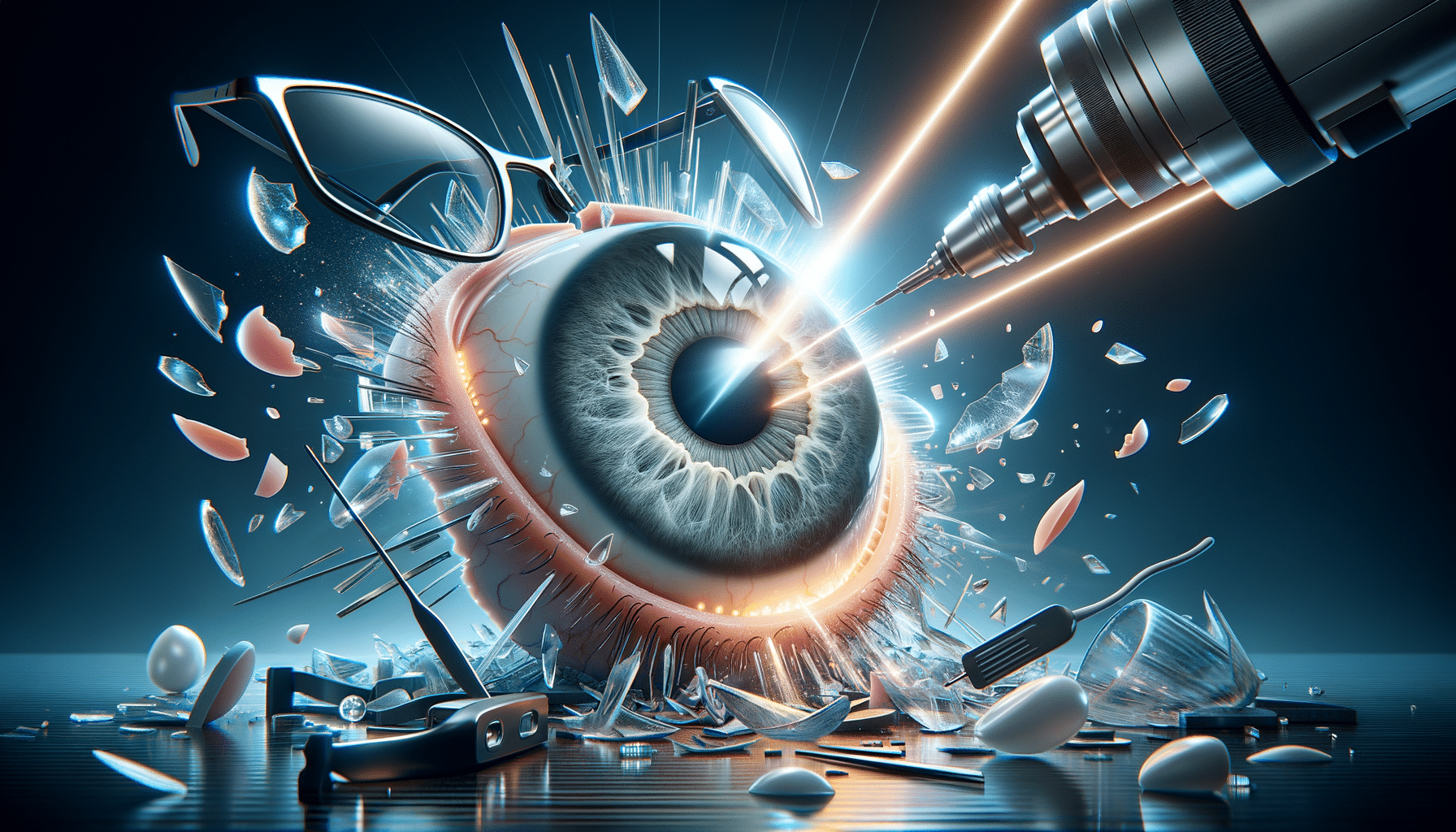LASIK Eye Surgery – Clearer Vision with Less Dependence on Glasses!
LASIK surgery offers a quick and effective way to improve vision, reducing the need for glasses or contacts. While results vary for each individual, many people experience greater visual clarity and convenience after the procedure.

Understanding LASIK: A Modern Marvel in Vision Correction
LASIK, which stands for Laser-Assisted In Situ Keratomileusis, is a popular surgical procedure designed to correct refractive vision issues such as myopia, hyperopia, and astigmatism. By reshaping the cornea, LASIK helps light entering the eye to be properly focused onto the retina, resulting in clearer vision. This procedure has become a widely accepted alternative to glasses or contact lenses, offering a permanent solution for many. The process typically involves creating a thin flap in the cornea, lifting it to allow for precise laser reshaping of the underlying corneal tissue. This method is renowned for its precision and minimal discomfort.
The appeal of LASIK lies in its quick recovery time and the potential for immediate results. Most patients notice a significant improvement in their vision within 24 hours. However, it’s crucial to understand that not everyone is a candidate for LASIK. Factors such as corneal thickness, overall eye health, and specific vision conditions must be evaluated by a qualified ophthalmologist. The technology behind LASIK continues to advance, with newer techniques and tools enhancing both safety and outcomes.
The Procedure: What to Expect Before, During, and After LASIK
Before undergoing LASIK, a comprehensive eye examination is essential. This evaluation ensures that the patient’s eyes are healthy and suitable for the procedure. Measurements of the cornea’s shape and thickness, as well as pupil size and refractive errors, are taken to tailor the surgery to the individual’s needs. Patients are advised to stop wearing contact lenses for a period before the surgery, as lenses can alter the shape of the cornea.
During the procedure, which typically lasts about 30 minutes, patients are awake but under local anesthesia in the form of numbing eye drops. The surgeon uses a femtosecond laser to create a corneal flap, which is then lifted to allow an excimer laser to reshape the cornea. This part of the surgery usually takes less than a minute per eye. Although the procedure is generally painless, some patients might experience slight pressure on their eyes.
Post-surgery, patients are advised to rest and avoid strenuous activities. Eye drops are prescribed to prevent infection and inflammation. While most people return to normal activities within a day or two, complete healing can take several weeks. It’s important to attend follow-up appointments to monitor the healing process and ensure optimal results.
Benefits of LASIK: Clarity and Convenience
One of the most significant advantages of LASIK is the potential for a life without glasses or contact lenses. Many patients achieve 20/20 vision or better, which can be life-changing. This newfound clarity can enhance daily activities, from driving to enjoying sports and outdoor adventures. The convenience of waking up with clear vision cannot be understated, and for many, it is a driving factor in choosing LASIK.
Beyond the obvious visual benefits, LASIK can also lead to long-term financial savings. While the initial cost of the surgery might seem high, it can be more economical over time compared to the recurring expenses of glasses and contact lenses. Additionally, LASIK is known for its quick recovery time, allowing patients to resume their daily lives with minimal disruption.
However, it’s important to note that LASIK does not guarantee perfect vision for everyone. Some patients may still need glasses for specific tasks, such as night driving or reading fine print. Despite this, the overall satisfaction rate for LASIK is exceptionally high, with many patients reporting a significant improvement in their quality of life.
Risks and Considerations: Weighing the Pros and Cons
As with any surgical procedure, LASIK carries certain risks and potential side effects. Common side effects include dry eyes, glare, halos, and difficulty with night vision. These symptoms are usually temporary and improve over time, but in rare cases, they can persist. It’s also possible for under-correction, over-correction, or regression to occur, meaning that additional surgery might be needed to achieve the desired outcome.
Patients should have realistic expectations and understand that while LASIK can significantly improve vision, it may not eliminate the need for glasses or contacts entirely. Age-related vision changes, such as presbyopia, can still occur, necessitating reading glasses for close work as one ages.
It’s crucial to choose a reputable and experienced surgeon to minimize risks. A thorough pre-operative assessment and honest discussion about potential outcomes and risks can help ensure that patients are well-informed and confident in their decision to undergo LASIK.
Is LASIK Right for You? Making an Informed Decision
Deciding to undergo LASIK is a personal choice that should be made after careful consideration and consultation with an eye care professional. Factors such as lifestyle, vision needs, and personal preferences play a significant role in determining if LASIK is the right option. For those who are tired of the inconvenience of glasses or contacts, LASIK offers a promising alternative.
Consultations with a qualified ophthalmologist can provide valuable insights into whether one is a suitable candidate for LASIK. These consultations typically involve discussing medical history, conducting eye exams, and understanding the patient’s vision goals. It’s also an opportunity to address any concerns or questions about the procedure.
Ultimately, the decision to undergo LASIK should be based on a comprehensive understanding of the benefits and risks, as well as realistic expectations about the outcomes. With the right information and guidance, many find LASIK to be a rewarding investment in their vision and quality of life.